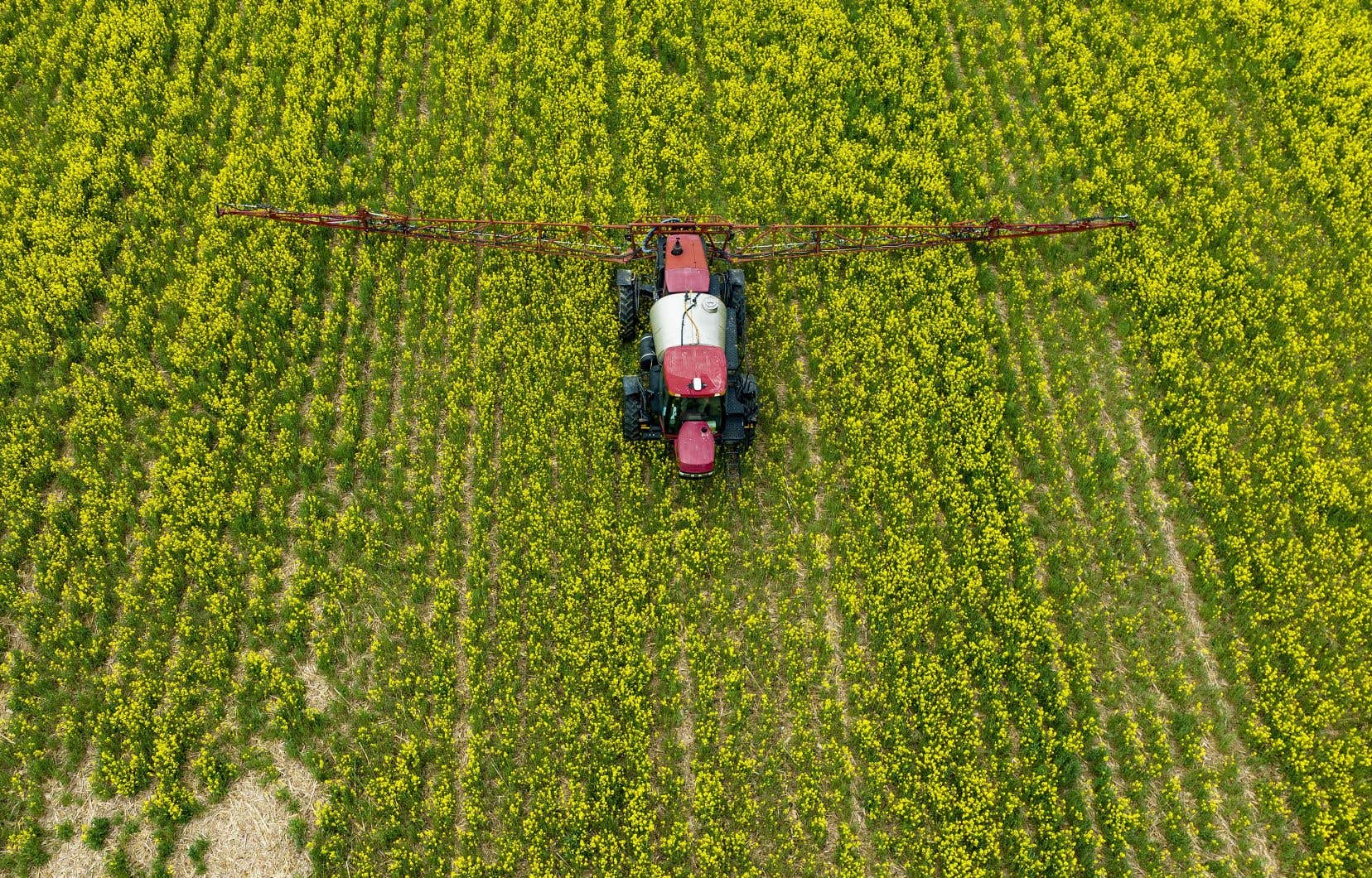Total pesticide sales remained above the 5 million kilogram mark in Quebec in 2022, according to the most recent report. This quantity is down less than 1% from the previous year’s all-time high. However, it exceeds the average of the last five years and also moves away from the government target in agriculture.
The use of substances under agronomic prescription has decreased. The document from the Ministry of the Environment, published online without a press release in recent days, does not, however, dwell on the rise of replacement products for these pesticides regulated in recent years, a phenomenon which concerns environmental groups.
By far the most sold substance remains glyphosate: its sales are up more than 21% compared to the previous year. It alone represents 42% of sales in all areas, but the overwhelming majority is made in agricultural areas.
Overall agricultural sales increased to 3.9 million kilograms, or 77% of the total. The gap with the government’s target for 2030 of 2.8 million kilograms, set out in the Sustainable Agriculture Plan (PAD), therefore remains significant.
It is downright “an acknowledgment of failure” for Thibault Rehn, coordinator of Vigilance OGM: “The most shocking thing is that we have still reached the 5 million mark, even though we have had reduction plans since 1992.” constant rise in glyphosate sales is symptomatic of the type of agriculture that is practiced in the territory, he continues. “This shows how dependent crops are on GMOs, because most of them are used in combination with glyphosate,” he notes.
This organization is also observing an increase in sales of Dicamba and 2,4-D. These two substances are part of the industry’s strategies to deal with the appearance of “weeds” resistant to glyphosate according to their description. “It’s a race forward, a vicious circle,” emphasizes Mr. Rehn.
Other emerging trends
The second most sold pesticide is corn gluten meal and it would not be used to grow food for the population. Rather, it is a biopesticide used to kill dandelions on lawns, according to the most widespread domestic use. The sale of biopesticides in urban areas has more than tripled since 2019, indicates the most recent report.
A positive aspect highlighted in the same document is the notable reduction in active ingredients covered by the justification and prescription. Since 2019, sales of atrazine, chlorpyrifos and three neonicotinoids have plummeted by 77%.
This mechanism therefore seems to have an effect, but agricultural producers can always turn to replacement products. In the case of neonicotinoids, these pesticides nicknamed “bee killers”, it is for example the diamides which now coat seeds.
As for atrazine, this herbicide used exclusively in corn crops, it saw an overall reduction of 93%. The report does not directly cite replacement products, just as the 2021 report avoided doing so, but S-metolachlor is one of them. It is used to chemically weed field crops and has high toxicity in mammals, including humans.
Risks
It is also this lesser-known herbicide which is at the top of the list of active ingredients increasing health risks. In other words, even if S-metolachlor is used in smaller quantities than glyphosate, its impact on health is greater, as measured by the Ministry of the Environment for 2022.
A consultation is also underway at the Pest Management Regulatory Agency (Health Canada) on its uses, mainly to add protective measures. It is partially banned in France, notes Thibault Rehn of Vigilance OGM, mainly to protect drinking water and human health.
The government’s target in terms of risks to health and the environment by 2030 is a reduction of 40% compared to 2006, also indicated in the PAD. Here again, there is still a way to go. The environmental risk indicator fell by only 3% compared to the base year. That for human health fares better with a decrease of 21%.
“We can be happy that these indices are falling, but we remain on our guard about the way in which these risks to health and the environment are calculated. Is it updated based on new studies that come out? And are the indices based much on industry studies? », nuance Mr. Rehn.
